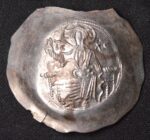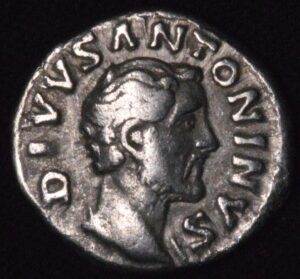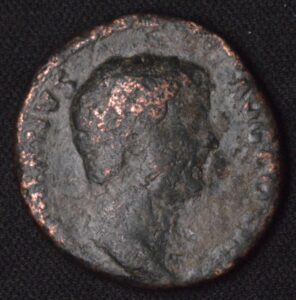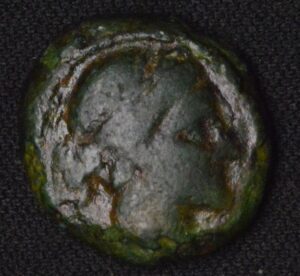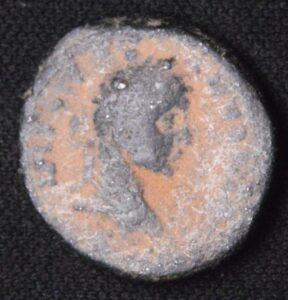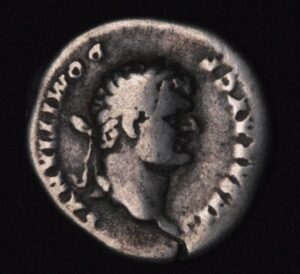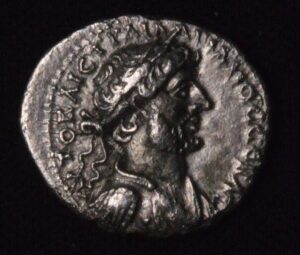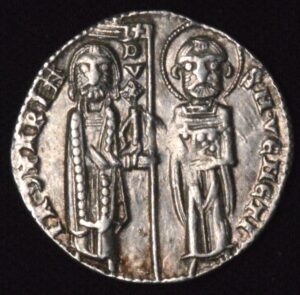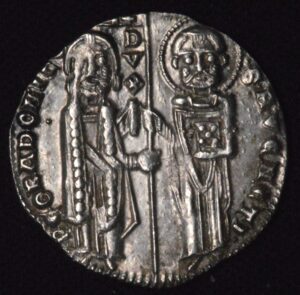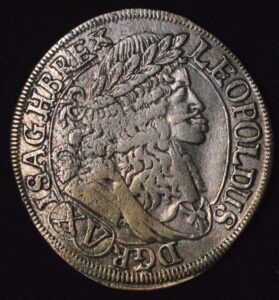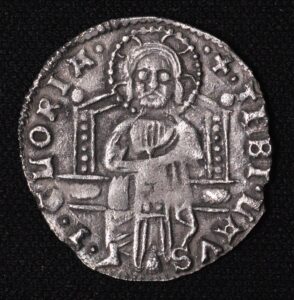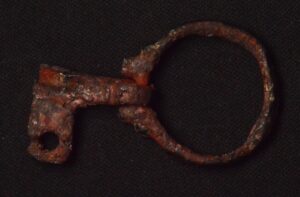Description
The Byzantium, Manuel I aspron trachy is a distinctive cup-shaped (scyphate) coin minted under Emperor Manuel I Komnenos between 1143 and 1180 CE. This coin is struck from electrum, a precious alloy of gold and silver, and represents one of the major denominations introduced in Byzantine monetary reforms. The aspron trachy stands out not only for its unique concave shape but also for its blend of artistry, historical significance, and innovative metalwork.
The obverse of this electrum coin typically features Christ standing on a dais, nimbate (haloed) and holding a book of Gospels, flanked by two eight-pointed stars. This religious imagery reflects the strong connection between the Byzantine state and Christianity, often serving as a reminder of Constantinople’s spiritual as well as political authority. The reverse shows Emperor Manuel I Komnenos and St. Theodore standing together, holding a patriarchal cross between them, and wearing elaborate regalia—an image symbolizing imperial and saintly partnership in guardianship over the empire.
With an average weight of around 3.9–4.3 grams and a diameter of approximately 31–32 mm, the aspron trachy is both visually impressive and historically important. The concave form likely developed for improved durability and to set Byzantine coins apart from potential imitations. Deep legends, striking religious symbolism, and meticulous detail make these coins highly prized by collectors and historians. The electrum content was approximately six karats of gold to 18 karats of silver, and its ‘white’ color (from the silver) gave rise to the aspron (‘white’) name.
These coins were minted in Constantinople and played a vital role in everyday payments as well as imperial propaganda. Their prevalence in commerce and visual similarity to church mosaics such as those at Hagia Sophia highlights their cultural and economic influence in the Byzantine Empire. The images on the coins provided constant reminders to their holders of both the emperor’s legitimacy and the city’s spiritual heritage.
Aspron trachys from the reign of Manuel I are valued today for their rarity, historic imagery, and innovative design. Their concave shape, precious metal alloy, and intricate artistic themes make them a popular and meaningful acquisition for collectors specializing in medieval or Byzantine coinage.
The obverse of this electrum coin typically features Christ standing on a dais, nimbate (haloed) and holding a book of Gospels, flanked by two eight-pointed stars. This religious imagery reflects the strong connection between the Byzantine state and Christianity, often serving as a reminder of Constantinople’s spiritual as well as political authority. The reverse shows Emperor Manuel I Komnenos and St. Theodore standing together, holding a patriarchal cross between them, and wearing elaborate regalia—an image symbolizing imperial and saintly partnership in guardianship over the empire.
With an average weight of around 3.9–4.3 grams and a diameter of approximately 31–32 mm, the aspron trachy is both visually impressive and historically important. The concave form likely developed for improved durability and to set Byzantine coins apart from potential imitations. Deep legends, striking religious symbolism, and meticulous detail make these coins highly prized by collectors and historians. The electrum content was approximately six karats of gold to 18 karats of silver, and its ‘white’ color (from the silver) gave rise to the aspron (‘white’) name.
These coins were minted in Constantinople and played a vital role in everyday payments as well as imperial propaganda. Their prevalence in commerce and visual similarity to church mosaics such as those at Hagia Sophia highlights their cultural and economic influence in the Byzantine Empire. The images on the coins provided constant reminders to their holders of both the emperor’s legitimacy and the city’s spiritual heritage.
Aspron trachys from the reign of Manuel I are valued today for their rarity, historic imagery, and innovative design. Their concave shape, precious metal alloy, and intricate artistic themes make them a popular and meaningful acquisition for collectors specializing in medieval or Byzantine coinage.
The Byzantium, Manuel I aspron trachy is a distinctive cup-shaped (scyphate) coin minted under Emperor Manuel I Komnenos between 1143 and 1180 CE. This coin is struck from electrum, a precious alloy of gold and silver, and represents one of the major denominations introduced in Byzantine monetary reforms. The aspron trachy stands out not only for its unique concave shape but also for its blend of artistry, historical significance, and innovative metalwork.
The obverse of this electrum coin typically features Christ standing on a dais, nimbate (haloed) and holding a book of Gospels, flanked by two eight-pointed stars. This religious imagery reflects the strong connection between the Byzantine state and Christianity, often serving as a reminder of Constantinople’s spiritual as well as political authority. The reverse shows Emperor Manuel I Komnenos and St. Theodore standing together, holding a patriarchal cross between them, and wearing elaborate regalia—an image symbolizing imperial and saintly partnership in guardianship over the empire.
With an average weight of around 3.9–4.3 grams and a diameter of approximately 31–32 mm, the aspron trachy is both visually impressive and historically important. The concave form likely developed for improved durability and to set Byzantine coins apart from potential imitations. Deep legends, striking religious symbolism, and meticulous detail make these coins highly prized by collectors and historians. The electrum content was approximately six karats of gold to 18 karats of silver, and its ‘white’ color (from the silver) gave rise to the aspron (‘white’) name.
These coins were minted in Constantinople and played a vital role in everyday payments as well as imperial propaganda. Their prevalence in commerce and visual similarity to church mosaics such as those at Hagia Sophia highlights their cultural and economic influence in the Byzantine Empire. The images on the coins provided constant reminders to their holders of both the emperor’s legitimacy and the city’s spiritual heritage.
Aspron trachys from the reign of Manuel I are valued today for their rarity, historic imagery, and innovative design. Their concave shape, precious metal alloy, and intricate artistic themes make them a popular and meaningful acquisition for collectors specializing in medieval or Byzantine coinage.
CUSTOMER FEEDBACK




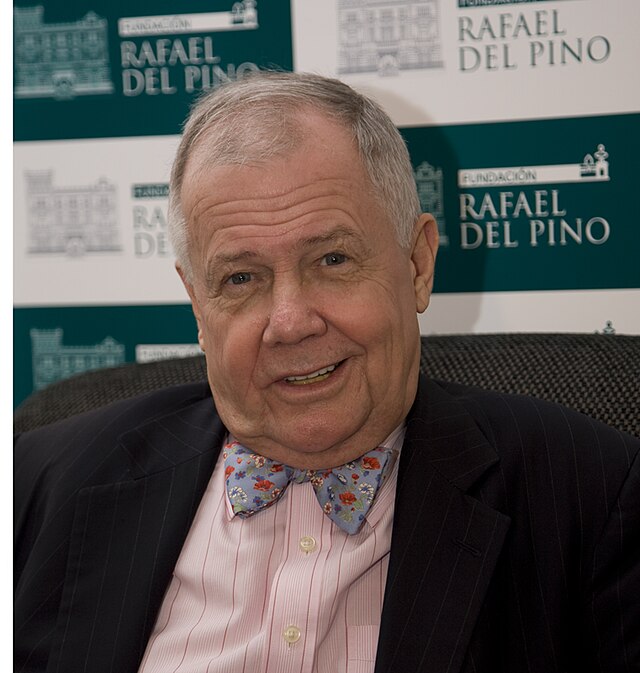



Related Products & Newly Released!




SHIPPING POLICY
Your order is shipped from the United States with USPS tracking within one business day.
14 Day Return Policy
You can return your item back within
14 days of the purchase

Secure payments
Your payments are 100% secure and are processed through Square or PayPal on a protected security network.
SHIPPING POLICY
FREE International and Domestic (United States) shipping. Your order is shipped with USPS tracking 24 hours after you order.
14 Day Return Policy
You can return your item back within
14 days of the purchase

Secure payments
Your payments are 100% secure and are processed through Square or PayPal on a protected security network.
RESOURCES
support
Get Real Deals!
Sign up now to receive our articles for the latest insights and promotions!
RESOURCES
support
Get Fresh Articles!
Signup our newsletter to get update insight or promotions.





